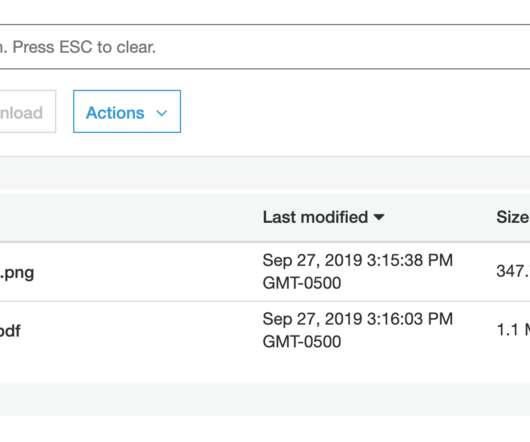Free Cloud Courses at Linux Academy — July 2019
Linux Academy
JUNE 25, 2019
By adding free cloud training to our Community Membership, students can develop their Linux and Cloud skills even further. Members of the Linux Academy community come together and share their insights and questions. Stay tuned to the Linux Academy blog for details! Linux Academy Free Courses in July. Ansible Quick Start.














Let's personalize your content